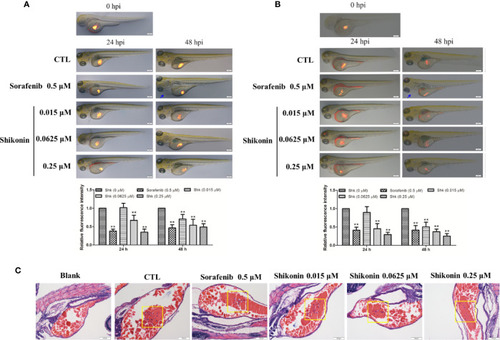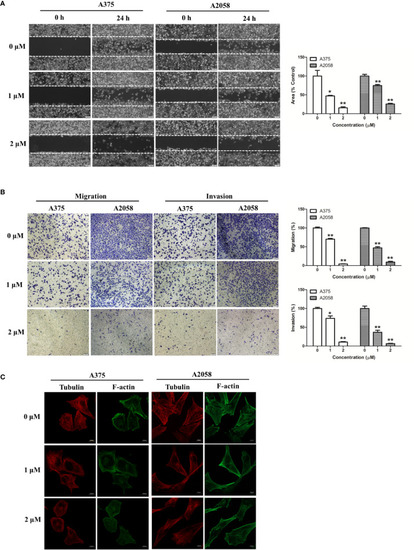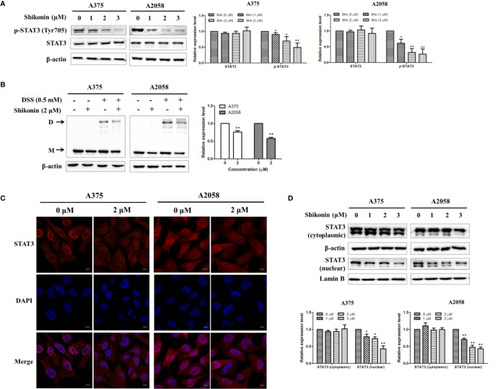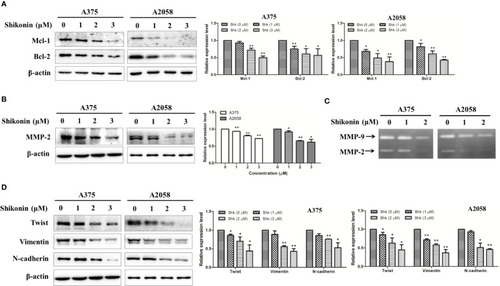- Title
-
Inhibition of the STAT3 Signaling Pathway Contributes to the Anti-Melanoma Activities of Shikonin
- Authors
- Cao, H.H., Liu, D.Y., Lai, Y.C., Chen, Y.Y., Yu, L.Z., Shao, M., Liu, J.S.
- Source
- Full text @ Front Pharmacol
|
Shikonin inhibited melanoma tumor growth in zebrafish xenograft model. Fluorescently labeled PHENOTYPE:
|
|
Shikonin reduced viability and induced apoptosis in human melanoma cells. A375 and A2058 cells were treated with indicated concentrations of shikonin. |
|
Shikonin inhibited melanoma cell migration and invasion. |
|
Shikonin inhibited STAT3 signaling pathway in melanoma cells. |
|
Shikonin down-regulated protein levels and inhibited enzymatic activities of STAT3-targeted molecules in melanoma cells. A375 and A2058 cells were treated with indicated concentrations of shikonin for 24 h, and then total cell lysates were collected, expression levels of |
|
Overexpression of STAT3 in human melanoma A375 cells reduced shikonin-mediated cell growth, migration, and invasion inhibition. A375 cells were transiently transfected with an empty vector or a STAT3C-expressing construct for 24 h, and then |






